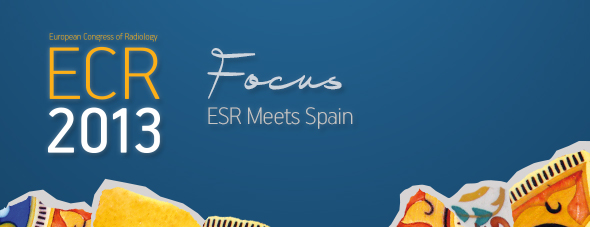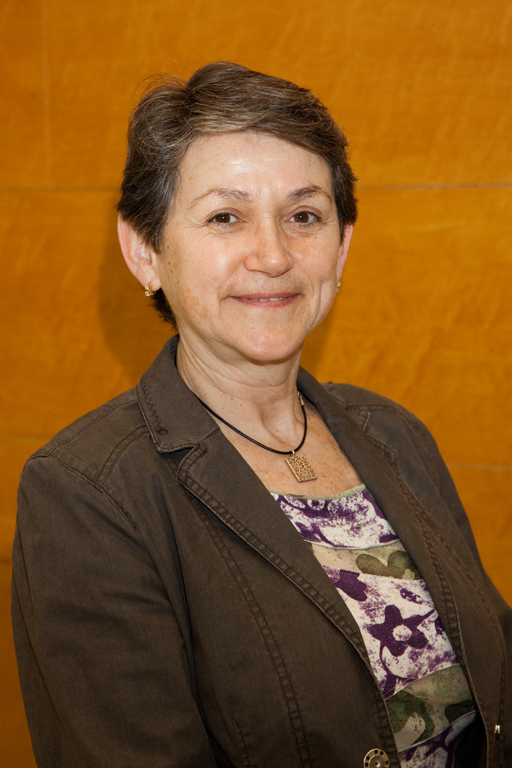ECR 2013 Focus: ESR Meets Spain

Spain, home to ECR 2013 president, Professor José Ignacio Bilbao, will be a guest of honour at the ‘ESR meets’ programme next March, at the European Congress of Radiology in Vienna. The European Society of Radiology (ESR) spoke with Professor Carmen Ayuso, president of the Spanish Society of Medical Radiology (SERAM), ahead of the session, which will focus on ischaemic stroke, aortic aneurisms and hepatocellular carcinoma imaging, as well as the general state of radiology in Spain.

Professor Carmen Ayuso from Barcelona, president of the Spanish Society of Medical Radiology (SERAM)
The European Society of Radiology (ESR): What are the latest advances and remaining challenges in ischaemic stroke imaging?
Carmen Ayuso: The latest advances in this field are the generalised use of diffusion-perfusion and perfusion CT in evaluating the penumbra area in stroke patients, and the selection of good candidates for endovascular rescue after endovascular treatment failure. The accurate measure of the real penumbra volume based on these techniques and their accurate correlation with clinical evolution remain a challenge.
ESR: What modalities are used to image ischaemic stroke and are there enough equipment and qualified staff to do so in Spain?
CA: We actually prefer to use perfusion CT in selecting anterior circulation 0–6h stroke onset patients because of their accessibility and our results. We tend to use diffusion/perfusion MRI in posterior fossa and unknown onset stroke patients. There are enough qualified staff and equipment in the reference centres where endovascular (EV) treatment is offered.
ESR: What modalities are used to image patients suffering from aortic aneurysms? What role do these modalities play in diagnosis, treatment and follow-up?
CA: CT and MR angiography are the imaging techniques most often used for patients suffering from aortic aneurysms. Angio CT plays a prominent role in the diagnosis, treatment planning and follow-up of patients treated with EV techniques.
ESR: Are there any promising developments in this field?
CA: Complex EVAR (endovascular aneurysm repair) including branched, fenestrated and chimney procedures, allows a wider indication for this treatment. Repair of endoleaks by direct puncture of the residual aneurysmal sac using 3D navigators is a promising complementary treatment technique for these technical and clinical problems.
ESR: Could you please tell me more about the Barcelona Clinic Liver Cancer (BCLC) staging system?
CA: Up to now, the only proposal linking staging to prognostic prediction and treatment indication has been the BCLC approach. This classification has emerged as the standard classification for the clinical management of HCC. The BCLC classification has been validated externally in prospective studies and different settings, and establishes treatment recommendations for all stages of HCC. It has been endorsed by several scientific associations (EASL, AASLD, ESMO, WGO). It was presented in 1999 (Llovet JM, et al. Semin Liver Dis 1999; 19: 329–38) and since then it has been refined according to new scientific evidence. The last update was published in 2012 (Forner A, et al. Lancet 2012;379:1245).
ESR: How high is the incidence of HCC in Spain?
CA: The latest estimates from the International Agency for Research on Cancer (IARC) indicate an age-adjusted incidence rate in men of 9.2 x 100.000, while it is significantly lower in women. This corresponds to an intermediate rate similar to other countries of southern Europe. However, it is important to note that HCC is currently the main cause of death in patients with cirrhosis, and accounts for more than 30% of patients registered for liver transplantation all over Europe.
ESR: Why did you choose these three topics to illustrate Spanish radiology at ECR 2013?
CA: I chose topics where radiologists are involved in the management of the patient, from beginning to end, from screening to treatment, and even further into the follow-up after treatment. Radiology in Spain is completely integrated into multidisciplinary teams for many specific processes like participating in the decision-making process and improving efficacy. I selected three topics in which we have a particularly important role.
ESR: What do you expect from your participation in the ‘ESR meets’ programme?
CA: I particularly expect to increase knowledge and awareness of the tasks of Spanish radiologists in Europe. Also, I expect to make deeper ties with other researchers and groups working with imaging to enrich radiology and Spanish radiology in a general sense.
ESR: Scientific research has been hit hard by Spain’s austerity budget. How does this affect imaging research across the country?
CA: These are hard times in Europe, especially in southern countries. Nevertheless these challenging situations create an opportunity for creative and imaginative people like us to innovate and take advantage of this moment. Scientific research is carrying on with enthusiasm as we will show in our session on Spanish radiology at ECR 2013.
ESR: Has this translated into a renewed interest from Spanish radiologists in international projects? Is it more interesting for Spanish radiologists to take part in international conferences such as ECR now than a few years ago?
CA: Of course we are interested in new research fields and professional options, but this is not new. We have consolidated researchers working in international projects not only in Europe, but also in the United States. We also have well-known radiologists deeply involved in the ECR and ESR, such as Professors Luis Donoso and Luis Martí-Bonmatí. Professor José Ignacio Bilbao is president of ECR 2013, and Spanish radiologists have been very active participants in the ECR in recent years.
ESR: Are Spanish radiologists looking forward more to developing their careers outside their country nowadays?
CA: In the global world we live in, frontiers are less rigid. Nowadays, we have more Spanish radiologists working outside the country and we also have more foreign radiologists working in Spain.
ESR: Do you think cooperation between European radiologists is generally satisfactory? Could it be improved and, if yes, how?
CA: Yes, cooperation exists and it can always be improved. Communication, scientific rigour, compromise and seriousness are the most important elements to improve confidence and cooperation.
ESR: Are you a regular visitor to the ECR? What do you enjoy the most at the congress?
CA: Yes, I regularly attend the ECR because it is a very good opportunity to share professional experiences, results, doubts and initiatives with other colleagues, who also regularly attend the congress. You learn during the sessions and also outside of them.
ESR: Are you looking forward to some scientific sessions in particular at ECR 2013?
CA: From an organisational point of view, I am interested in a controversial topic that will be discussed in the Special Focus Sessions entitled ‘Radiographers and ultrasonography in Europe.’ Also, I am interested, of course, in the Multidisciplinary Sessions dedicated to Hepatocellular Carcinoma (MS4), which is my particular field of interest, to see the Pamplona (Spain) team in action, and to share experiences and discuss approaches with them.
ESR: Is there anything you would like to add?
CA: I am pretty sure that with international collaboration, Europe will contribute significantly to the improvement and global success of radiology. The ECR is the best place to do so.
Friday, March 8, 10:30–12:00
ESR meets Spain
EM 1: Imaging: essential tool from diagnosis to treatment
This interview previously appeared in the ECR 2013 Preliminary Programme

